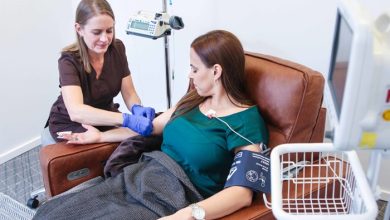
Questions Answered in This Article:
- What Happens When You First Go Into Rehab
- How to Prepare for Rehab
- How Long Do People Normally Go to Rehab
- What Happens After Rehab Planning for the Future
Thinking about going to rehab—or helping someone else take that step—can bring up a lot of emotions. Fear. Hope. Doubt. Relief. That’s completely normal. The idea of starting addiction treatment might feel overwhelming, especially if you’re not sure what actually happens inside a rehab program.
That’s why we created this guide: to help you understand what to expect from a rehab? Honestly, simply, and with care. When you know what’s ahead, the unknown becomes less intimidating. And that’s where healing begins. At Hart Rehab, people find more than just a place to detox or attend therapy. They find support, structure, and a fresh start.
Incorporating a holistic approach, a comprehensive rehab treatment plan often includes personalized therapy sessions, medical detoxification, and aftercare planning to ensure long-term recovery. For those seeking a more exclusive experience, Luxury Rehab Los Angeles offers a serene environment where individuals can focus on healing with the support of experienced professionals. This setting provides a unique blend of comfort and care, allowing patients to engage in various therapeutic activities tailored to their specific needs. By addressing both the physical and psychological aspects of addiction, such programs aim to foster sustainable recovery and personal growth, ensuring that individuals are well-equipped to maintain their sobriety beyond the confines of the facility.
What Happens When You First Go Into Rehab
Your first few days in rehab are all about settling in safely. When you arrive, you’ll meet with caring medical and clinical staff who help you get comfortable and understand what comes next.
They’ll guide you through:
- A full health check (both physical and mental)
- Questions about your history with drugs or alcohol
- A personalized treatment plan that meets your needs
If detox is needed, it typically happens right away, in a medically supervised setting. This stage might feel tough, but it’s short—and you won’t go through it alone. Trained professionals will be there to manage symptoms and help you feel as comfortable as possible. Once detox wraps up (often within a few days), you’ll be ready to move forward with therapy, group work, and everything else rehab has to offer.
How to Prepare for Rehab
Getting ready for rehab means preparing practically, emotionally, and mentally. It’s more than just packing a bag. Here’s a quick guide to help you prepare:
- Let your employer know (you may be eligible for protected leave under FMLA)
- Make arrangements at home, like childcare or pet care
- Bring only what you need—comfortable clothes, essential items, and any approved medications
- Take a deep breath and remind yourself that this is a huge step forward
Also, try to set expectations with loved ones. Let them know you may be out of contact for a while—and that’s okay. This time is for you.
A Day in the Life of Rehab What Will Happen in Rehab
So what will your days actually look like? While every treatment center is a little different, most follow a structured, supportive routine. A typical day in inpatient treatment might include:
- Morning: Meditation, breakfast, and a group session
- Midday: One-on-one therapy, skills workshops, and lunch
- Afternoon: More therapy, maybe some yoga or fitness, and creative outlets like art
- Evening: Peer support groups, journaling, and downtime
Rehab isn’t about punishment—it’s about healing. You’ll talk through hard things, yes. But you’ll also laugh, rest, move your body, and connect with others who understand what you’re going through. At Hart Rehab, the approach is balanced and individualized, helping you grow stronger each day—not just stay sober.
Inpatient vs Outpatient Program
If you’re exploring options, you might wonder whether inpatient or outpatient treatment is right for you. Here’s a simple breakdown:
Inpatient rehab is where you live at the facility, full-time. It’s best when:
- You need detox or 24/7 support
- You’ve struggled with relapse in the past
- Your home environment isn’t stable or safe
Outpatient programs allow you to live at home while attending therapy during the day or evening. They’re great for:
- People with a strong support system at home
- Those transitioning out of inpatient care
- Individuals with mild to moderate substance use issues
Some people start inpatient and move to outpatient later—that’s a normal part of the journey.
How Long Do People Normally Go to Rehab
There’s no exact timeline that works for everyone, but there are common paths.
- 30 days is a good start for people needing short-term stabilization and motivation
- 60 days gives time to dig into deeper emotional work and coping skills
- 90 days or longer is often recommended for those with long-term substance use or mental health challenges
Research shows that longer treatment often leads to better outcomes, especially when it’s tailored to your life and goals. Hart Rehab offers flexible program lengths and meets you where you are—whether you need just a few weeks or a longer stay to fully reset.
The Role of Family and Friends in the Recovery Journey
Your support system matters. A lot. Addiction doesn’t only affect one person—it impacts families, friendships, and relationships. That’s why many rehab centers include family therapy or educational programs to help everyone heal together.
Involving your loved ones may look like:
- Family therapy sessions (in person or virtual)
- Learning about addiction and how to avoid enabling
- Setting healthier boundaries and improving communication
Even if your relationships feel strained right now, rehab can offer a fresh start—for everyone involved.
What Happens After Rehab Planning for the Future
Leaving rehab isn’t the end of recovery—it’s the start of your next chapter. A good treatment center won’t just focus on what happens inside their walls. They’ll help you plan for life afterward, too. This might include:
- Setting up outpatient therapy or support groups
- Connecting you with sober living homes if you need structure
- Building a relapse prevention plan tailored to your triggers
- Finding purpose again—through work, school, or hobbies
Hart Rehab makes sure each person leaves with a clear, supportive plan in place—so you don’t feel lost when it’s time to go.
Choosing a Treatment Facility That Truly Supports You
Rehab isn’t a one-size-fits-all experience. The best programs meet you where you are and treat you like a whole person—not just a diagnosis.
If you’re looking for a place that balances clinical care with warmth, structure with flexibility, and evidence-based treatment with real human compassion, Hart Rehab is here for you. We’ve helped people at all stages of recovery reclaim their lives—and we’re ready to help you do the same. You don’t have to figure it all out right now. Just start with one step. You’re already on your way.




